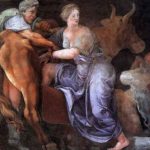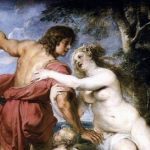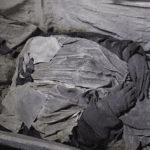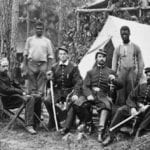 Weird Stuff
Weird Stuff  Weird Stuff
Weird Stuff  Mysteries
Mysteries 10 Tragic Disappearances and Deaths in Joshua Tree National Park
 History
History 10 Ways Childhood Really Sucked in the Old West
 Music
Music 10 Name Origins of Famous Bands from the 1990s
 Religion
Religion 10 Biggest Turnarounds by the Catholic Church
 Weird Stuff
Weird Stuff 10 Unbelievable Times Laws Had Unintended Consequences
 Humans
Humans Ten Historic Women Who Deserve Way More Credit Than They Got
 Movies and TV
Movies and TV 10 Films That Spawned Major Lawsuits
 History
History Ten Times Towns Were Wiped Off the Face of the Earth
 Creepy
Creepy 10 of the Most Disturbingly Haunted Public Houses in the UK
 Weird Stuff
Weird Stuff 10 Niche Subcultures That Are More Popular Than You Might Think
 Mysteries
Mysteries 10 Tragic Disappearances and Deaths in Joshua Tree National Park
 History
History 10 Ways Childhood Really Sucked in the Old West
Who's Behind Listverse?

Jamie Frater
Head Editor
Jamie founded Listverse due to an insatiable desire to share fascinating, obscure, and bizarre facts. He has been a guest speaker on numerous national radio and television stations and is a five time published author.
More About Us Music
Music 10 Name Origins of Famous Bands from the 1990s
 Religion
Religion 10 Biggest Turnarounds by the Catholic Church
 Weird Stuff
Weird Stuff 10 Unbelievable Times Laws Had Unintended Consequences
 Humans
Humans Ten Historic Women Who Deserve Way More Credit Than They Got
 Movies and TV
Movies and TV 10 Films That Spawned Major Lawsuits
 History
History Ten Times Towns Were Wiped Off the Face of the Earth
 Creepy
Creepy 10 of the Most Disturbingly Haunted Public Houses in the UK
10 Stories from Gnostic Mythology
The Gnostics were an early, heretical sect of Christianity that held starkly different views from orthodox—or official—Christian beliefs.
The foundational tenet of Gnosticism is that the world was created by an inferior and corrupt God. Therefore, the world as it is known today is inferior and corrupt. However, a piece of the true superior god resides within every human being, and by achieving gnosis—or “wisdom”—one can find salvation from this lesser evil. In short, the Gnostics believe you are your own savior.
Just like any belief system, the Gnostics held their own original mythology. Many of the stories and characters are obscure, and the details vary greatly.
One reason is that there were many sects and divisions of Gnostics. Another is that the practices and source materials were largely eradicated due to their condemnation as heretical. These 10 Gnostic myths stem primarily from sources that have combed through the discoveries at the Nag Hammadi library. The Nag Hammadi texts are a collection of hidden and partially destroyed documents that contained Gnostic teachings from the early Christian era that contradicted the mainstream Christian wisdoms of the day.
Other thinkers and leaders from the era also recorded information about the Gnostics. Through the aggregation of research, historians and practitioners have been able to piece together this general mythology of the Gnostics.
Related: 10 Religious Beliefs That Have Changed with History
10 God the Creator
The Gnostics believed that the God who Christians believe created the universe is not the “true” god. The true Creator for the Gnostics is an unknowable, inhuman entity or energy that humans are incapable of understanding.
While the Creator is not attributed with the creation of the world, it is said that this Creator did manifest beings called Aeons through a process called emanation. These Aeons continued to multiply and, with further degrees of separation from the source, lost more and more of their divinity. It is through this process that the creation of the world eventually came to be. This is explained more thoroughly in the creation story of the Demiurge, which is a tale all its own.[1]
9 Barbelo and the First Emanation
The first emanation, according to some Gnostic sects, was Barbelo. There are many interpretations of who or what Barbelo is, but all agree that she is a feminine energy or entity.
Some label her as the true mother of Christ. Others equate her with the Creator, as the feminine counterpart to his masculine, and that together they emanated the Aeons, or divinities, of Wisdom, Perfect Thought, and more. In the myth, as told by Irenaeus, she is simply the first in a line of many divine emanations.
Regardless of the details of her role, for most Gnostics, she is the first true introduction of the feminine into existence.[2]
8 The Pleroma and the Syzygies of Aeons
The Norse gods have Valhalla. The Greek gods have Mount Olympus. The Gnostic divinities have the Pleroma.
The Pleroma is like Heaven. It is the abode of the Creator and the divine emanations, including Barbelo. It is a perfect, flawless place.
The Aeons, much like their home, are also considered perfect, flawless beings, each encapsulating a perfect ideal: Eternal Life, Wisdom, Incorruptibility, and so on. These beings are even matched into male-female pairs called Syzygies. Every emanation has its counterpart, and together, they are abstract representations of divinity and duality.[3]
7 Sophia and the Creation of the World
One of the most famous Aeons in Gnostic mythology is Sophia. Sophia is responsible for setting in motion the events that created the universe.
According to legend, she was one of the last Aeons to emanate from the Creator, making her more prone to imperfection and mistakes. Sophia is “Wisdom” and represents divine wisdom, something all humans can access.
The world was created when Sophia fell from the Pleroma. She sought to discover the source of her creation and of divinity. In her futile, difficult quest, she gave birth to an illegitimate, ignorant being called the Demiurge without the knowledge of the Creator. The Demiurge ultimately went on to create the world—again, a tale all its own.
Because of her actions, Sophia is revered in Gnostic mythology as the mother of all creation, and her story serves as the guiding principle for all Gnostics: to seek divine gnosis or knowledge.[4]
6 The Demiurge
“The Demiurge” is the name given to the flawed child of Sophia and is the God of Abrahamic religion. He is the God who created the Universe, the God of the Bible, and the God to whom all modern Christians pray, according to the Gnostic creation myth.
Once Sophia realized what kind of a creature she had given birth to, she cast the child out of Pleroma. Alone and separated from all divinity, the Demiurge created the universe in its own corrupt image. Not only did he create the universe, but he also created his own version of Aeons, called Archons.
A critical aspect of the creation myth, in Gnostic beliefs, is that the Demiurge trapped divine sparks of the Pleroma via his mother Sophia, inside human beings. It is this divine spark that motivates the Gnostics in their practices toward seeking gnosis, which ultimately brings the soul’s redemption.[5]
5 The Archons
An Archon is a profaned Aeon. In other words, where Aeons are perfect aspects of divinity who abide in the Pleroma, the Archons are evil, flawed forces. They were created by the Demiurge as part of his construction of the material universe and assisted him in his creation of humans. If the Demiurge is the God of modern Christianity, then the Archons could be said to correspond to the religion’s angels.
The Archons influence and rule over all imperfections, profaned thoughts and urges, and flaws in the material world. These are external forces that humans are highly susceptible to. The only salvation is by becoming aware of the divine spark within and achieving gnosis.
The details about the Archons vary. It appears that there are between seven and twelve Archons. Most sources seem to agree that there are seven archons corresponding with the seven archaic planets (the Sun, the Moon, Mercury, Venus, Mars, Jupiter, and Saturn). But some texts attribute them to the twelve signs of the Zodiac. There is even one version of the story in which the original set of seven or twelve Archons populated until there were 365.[6]
4 The Garden of Eden
According to the interpretation of The Apocryphon of John, a famous Gnostic text, the myth of Adam and Eve is a bit different from the story most know today.
The original Adam was called Adamas, and he was a divine creation intended to be the “perfect human.” He dwelled in the Pleroma alongside the other divinities. Eventually, the “perfect family” followed when he and his consort, gnosis, or “knowledge,” came together and had a son named Seth.
Since the Demiurge mimicked other aspects of the Pleroma, Adamas was no exception. He created the profaned version of Adamas, which is the Adam written about in the book of Genesis. One teaching reveals that the original Adam created by the Demiurge was lifeless. The beings of the Pleroma witnessed this, and they saw an opportunity to retrieve the part of Sophia’s divinity that was left inside her son.
They instructed the Demiurge to breathe life into Adam’s body. He did so, and it transferred Sophia’s divinity out of the Demiurge and into the human body. This instantly made him a wiser, more divine being than the Demiurge and the Archons. As punishment, they made him mortal and hatched a plan to take back the spark by creating Eve. The plan did not work, however, as there were instead two human beings more enlightened than themselves.[7]
3 Seth
One important character in the original myth of creation is Seth. Just like in Christianity, he is a son of the first parents.
Christians regard Seth as the son through whom Adam and Eve’s legacy carried on. Since Cain killed Abel, it must be that humanity continued on through the son born to them as Abel’s replacement: Seth.
For the Gnostics, Seth plays a similar role; however, as much of the Gnostic myth of creation contains duality, there are two Seths. The first is the Seth of the Pleroma, the son of Adamas and his consort, gnosis. The second “Seth” in Gnostic mythology is the third son of Adam and Eve. While there is scarce material on the mythology of Seth, the general consensus is that the Demiurge raped Eve. By him, she bore the sons Cain and Abel. The two sons were as corrupt as their father.
Seth, however, was born of Adam and Eve. It is through him and the divine spark that he inherited from his parents that the human race has spawned. Upon birth, however, the knowledge of the divine spark within is wiped from memory because the family drank from the waters of forgetfulness.
It then becomes the lifelong quest of the human to “awaken.” By achieving gnosis, or knowledge of one’s own divinity, one can achieve salvation.[8]
2 The Serpent in Eden
The Gnostic telling of the Garden of Eden does include the serpent, but the interpretation of its role in humanity’s fall is the complete opposite of that of Christianity.
Some Gnostic sects believe that the serpent was actually Jesus Christ sent to liberate Adam and Eve from the Demiurge and awaken them to the divine sparks within them. Other interpretations refrain from identifying the snake specifically as Jesus Christ but rather as wisdom itself, a conduit for Sophia to assist Eve in the garden.
For Gnostics, the serpent is the hero—not the villain.[9]
1 Jesus Christ
Jesus Christ is the central figure of Christianity. He is the son of God, sent to absolve humanity from their sins. In Gnosticism, his role is very similar but heretical to the orthodox Christian point-of-view.
Based on Gnostic texts like The Gospel of Philip and The Gospel of Thomas, Jesus’ message was not that belief in him and God would save one’s soul. Instead, he, like the serpent in the Garden of Eden, was sent to humanity to remind them of their own divinity and that their redemption resides within them through the revelation of gnosis.
The nature of Jesus in Gnostic beliefs is also different from the orthodox Christian perspective. Much like other aspects of Gnosticism, his nature is dual. He was, at once, both a material, corporeal being subject to the sufferings of man and a purely divine being immune from the human condition. He was two beings and one at the same time.
Some systems or sects of Gnostics label Christ’s spiritual aspect as being that of an Aeon. In this interpretation, Christ the Aeon was sent to Earth to correct the error and corruption originally set in motion by the Demiurge and the Archons at the original conception of the universe. His body was simply a vehicle or conduit for him to be able to actually communicate and get the message of gnosis and self-redemption to humanity.[10]








